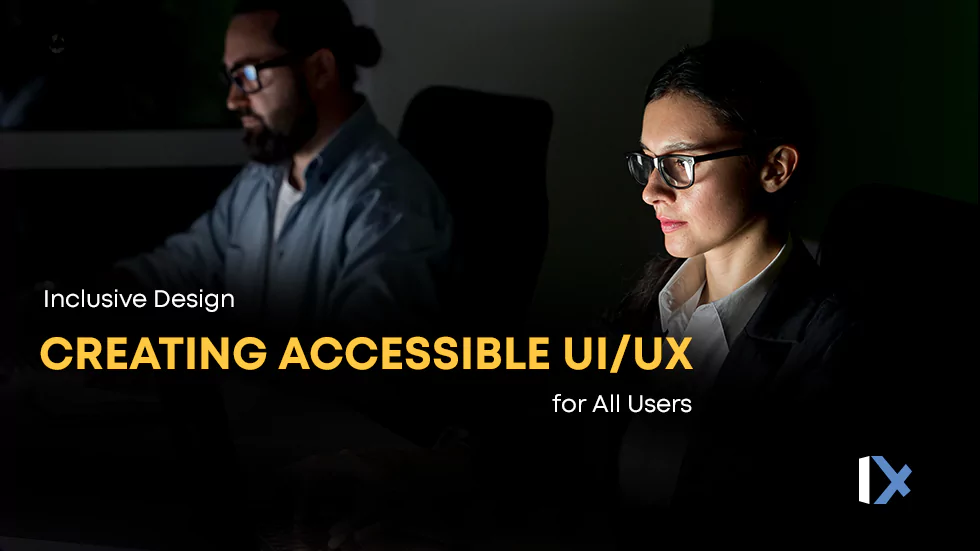Inclusive Design: Crafting Accessible UI/UX for All Users
Discover the transformative power of Inclusive Design in UI/UX. Craft accessible digital experiences for all users, empowering diversity.

Introduction
In the dynamic landscape of digital design, where user experience (UX) and user interface (UI) have become pivotal, a remarkable shift has emerged—towards a more inclusive and accessible approach. Inclusive design, with its unwavering commitment to crafting interfaces that cater to the diverse needs of all users, regardless of their abilities, is reshaping the very foundation of design philosophy. This article delves into the world of inclusive design, elucidating its significance, principles, and the transformative impact it holds for UI/UX.
Understanding Inclusive Design
Inclusive design is not just a design methodology; it’s a mindset that underscores the importance of creating digital products that are accessible and usable by individuals of all abilities and disabilities. Beyond adhering to accessibility standards, inclusive design thrives on empathy and user-centricity. It recognizes that users encompass a vast spectrum of attributes—physical, cognitive, sensory—and endeavors to engineer interfaces that accommodate this diversity flawlessly.
The Essential Principles of Inclusive Design
- Representation and Collaboration: Building truly inclusive digital experiences necessitates the involvement of individuals representing varied backgrounds and abilities in the design process. Their insights illuminate potential challenges and spark innovative solutions that resonate with a broader user base.
- Customization and Adaptation: The inclusive design journey involves granting users the autonomy to tailor their experience according to their preferences and needs. From adjusting font sizes to selecting color contrasts, providing choices empowers users to engage meaningfully.
- Intuitive Navigation: Navigational clarity benefits every user, but its significance escalates for those with cognitive or visual impairments. Thoughtfully organized menus, intelligible labels, and user-friendly icons are integral for a seamless navigation experience.
- Content Accessibility: To uphold inclusivity, content must be presented in diverse formats—text, images, audio—to cater to varied learning styles and disabilities. Incorporating alt text for images and captions for videos ensures content accessibility for all.
The Transformative Impact on User Experience
Championing inclusive design yields far-reaching benefits that significantly enrich user experience:
- Broadened User Reach: By extending accessibility to a wider user spectrum, inclusive design unlocks new market segments that were once underserved or overlooked.
- Harmonized SEO Benefits: Many accessibility practices are aligned with search engine optimization (SEO) guidelines. This alignment not only ensures compliance but also cultivates higher search rankings and augmented organic traffic.
- Elevated Usability: Inclusive design often streamlines interfaces, optimizing interactions for all users and enhancing the overall usability of the digital product.
- Incorporating Inclusive Design: A Strategic Approach
- User-Centric Research: A comprehensive understanding of your target audience’s diverse needs and challenges lays the groundwork for an inclusive design approach. User surveys, interviews, and usability tests that encompass individuals from various backgrounds and abilities are indispensable.
- Interdisciplinary Collaboration: Inclusive design thrives on the synergy of designers, developers, content creators, and accessibility experts. A collaborative effort ensures that every design facet is primed for inclusivity.
- Mastery of Accessibility Guidelines: Navigating accessibility standards such as the Web Content Accessibility Guidelines (WCAG) is paramount to creating designs that adhere to industry best practices.
- Iterative Testing and Refinement: Regular testing of your designs with assistive technologies, coupled with ongoing feedback from users with disabilities, enables iterative refinements that continually enhance the inclusive nature of your design.
Conclusion
Inclusive design isn’t a fleeting trend; it’s a paradigm shift that redefines how we approach UI/UX. By embracing a range of perspectives, acknowledging diverse abilities, and implementing accessible features, we cultivate digital experiences that empower every user. Inclusive design isn’t solely about compliance—it’s about a journey towards innovation, empathy, and an equitable digital realm. As designers, it’s our prerogative to shape a future where digital interactions are universally seamless and enjoyable.